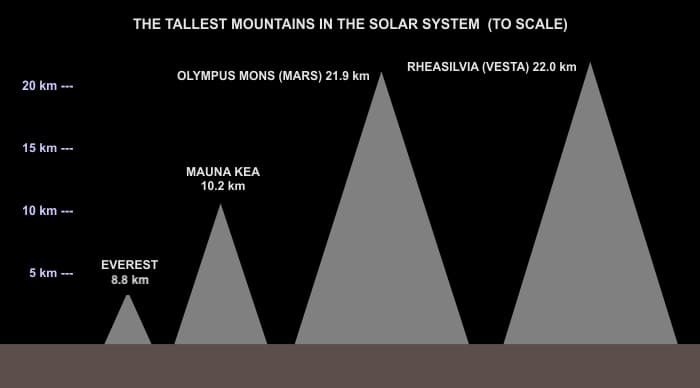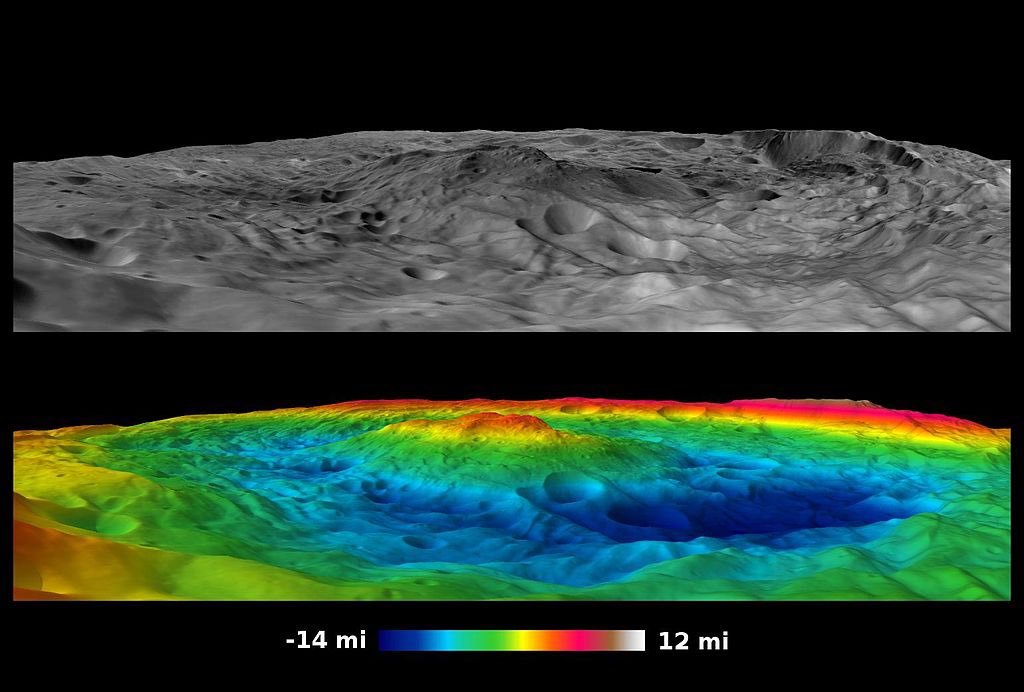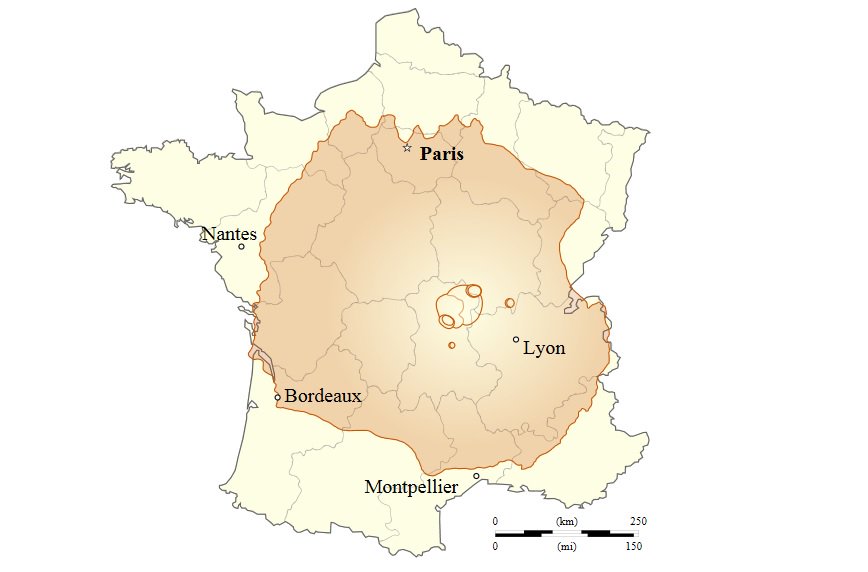
If you have ever considered climbing Mount Everest, which has a peak elevation of nearly 30,000 feet, then you may as well have Rheasilvia on your bucket list as well. Mountains are some of the most beautiful features here on Planet Earth, but other parts of the Milky Way galaxy also have some notable peaks. These are the tallest peaks known to mankind that many of us would like to hike, ski, or snowboard someday:
1. Rheasilvia – Peak Elevation 73,819 feet
Located in the Asteroid Belt somewhere between Jupiter and Mars, the Vesta asteroid is home to the tallest peak that humans have discovered so far. It is widely accepted that Rheasilvia is a crater that formed through an impact collision, most likely with another asteroid. Rheasilvia was discovered by the Hubble Telescope in 1997 and has been further studied by the Dawn spacecraft. Imagine trying to summit a mountain that is nearly three times taller than Everest!

2. Olympus Mons – Peak Elevation 72,000 feet
Olympos Mons is the largest volcano in the Milky Way and is roughly the size of France. Greek for Mount Olympus, this volcano was considered the largest mountain in the galaxy until Rheasilvia was discovered. It is an extremely wide mountain with sheer cliff drops on the edge, and scientists believe it formed through repetitive basaltic lava flows. To summit this mountain, one would have to travel through space for months and then hike for weeks as the base is over 350 miles wide. This volcano is surrounded by several other volcanic peaks, which all experience crazy Martian dust storms.

3. Equatorial Ridge – Peak Elevation 65,617 feet
Frequently referred to as the Voyager Mountains, the Equitorial Ridge is located on Saturn’s moon Iapetus. The Equitorial Ridge is located exactly on the equator of Iapetus, spans for more than 75% of the moon’s entire circumference, and makes up an impressive .1% of the planet’s entire mass. This ridgeline, which is perfectly straight and features both peaks and craters, was discovered by the Cassini spacecraft in 2004 and has been thoroughly studied since. For anyone that likes to hike along those sharp ridge-lines, this is the hike for you!
4. South Boösaule Mons – Peak Elevation 59,711 feet
Jupiter’s moon Io was discovered by Galileo in the early 1600s. This moon has a large extent of mountainous terrain with the most famous peaks located in the Boösaule Montes range. Reportedly, Io does not seem to have any plate tectonics, but studies suggest that the mountains here form through processes of indirect volcanism. The distance from Earth to Io is roughly 400 million miles, and its volcanoes are so powerful that they can be seen from telescopes on Earth.
5. Ascraeus Mons – Peak Elevation 49,000 feet
6. Ionian Mons – Peak Elevation 41,667 feet
7. Elysium Mons – Peak Elevation 41,338 feet
8. Arsia Mons – Peak Elevation 38,386 feet
9. Limb Mountain – Peak Elevation 36,089 feet
10. Skadi Mons – Peak Elevation 35,105 feet
So, next time you are thinking about summiting a major peak, consider buying a spacesuit!
**WATCH: Climbing Olympus Mons